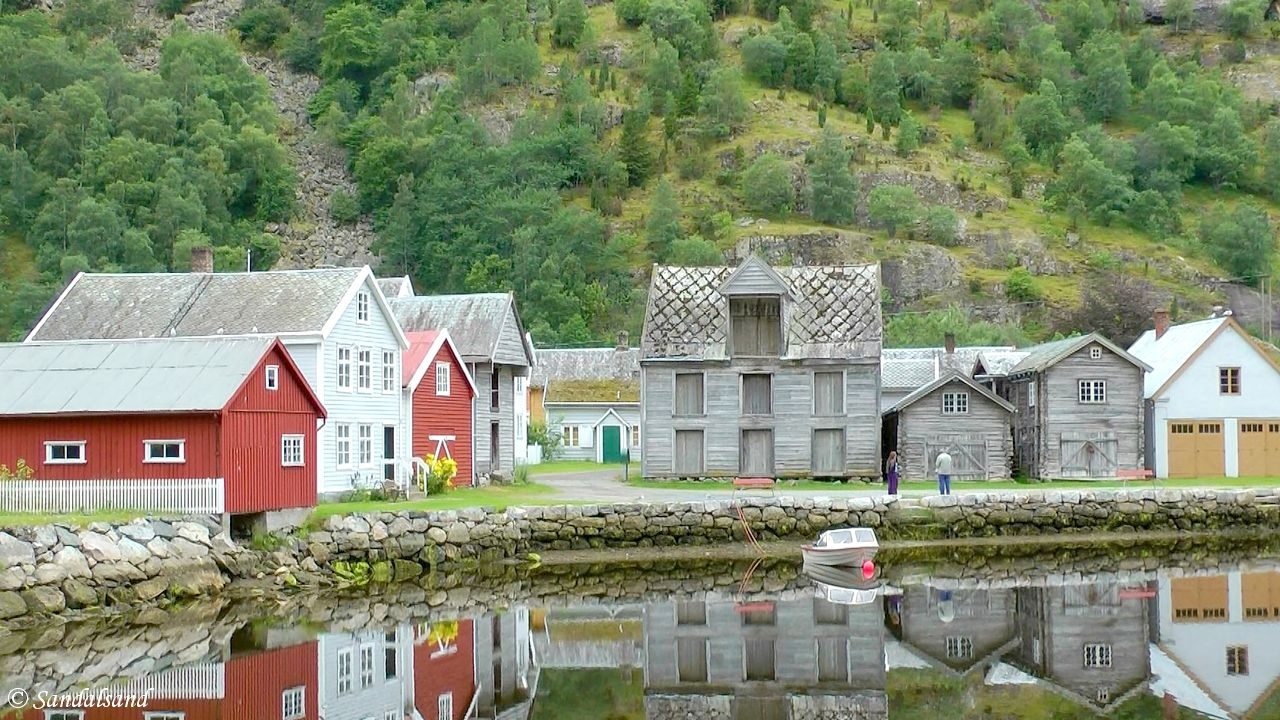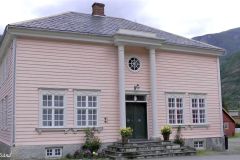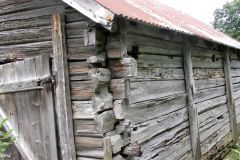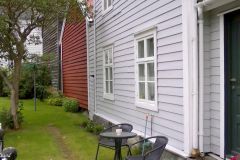Erik Pontoppidan, a renowned Danish bishop in Bergen, came to Lærdalsøyri and wrote about the “161 small houses built closely together”. That was in the year 1749. When we arrived 263 years later those houses were still there.
About Lærdalsøyri
Or perhaps not exactly the same houses, but the fact is that the old part of Lærdalsøyri is a protected building environment that consists of around 161 wooden buildings dating back to the 18th and 19th centuries. This considerable number makes this old town quite unique in Norway. It has much in comparison to the township of Røros, one of UNESCO’s World Heritage Sites.
Like Rørøs, Lærdalsøyri is very picturesque. Unlike Røros, Lærdalsøyri does not have (yet) an international status like that.
We came here late on the first day of our four day road trip of Western Norway. As the previous post describes we started out in Stavanger in the south, drove north to Bergen and then turned inland. Lærdal is almost as far as you get in the Western Norwegian fjords before the high mountains stop any attempt of moving ahead but climbing.
Our map
This is the map of our trip. Zoom in and out and expand to a new tab as you like.
“The Salmon Lords”
The suffix “øyri” means river mouth or estuary. The old town and the valley upstream is formed by the Lærdal River. There are many famous rivers in Norway but Lærdal is one of the most famous of them all. It all has to do with fishing. Sport fishing for salmon.
This sport was very popular among the English nobility in the mid-19th century; the “Salmon Lords” as we call them in Norway. The country’s own King Harald has been a regular in Lærdal since the 1970s, calling it “my second queen”. A huge and recurring problem in most Norwegian salmon rivers since the 1990s is the fish parasite Gyrodactylus salaris, or Salmon Fluke. There has been extensive efforts to rid this and other rivers of the parasite.
The English Lords were presumably not as keen on taking in the atmosphere in Lærdalsøyri as we were, the cloudy summer evening we arrived and the next morning before leaving. We had our first night on our four day road trip of the Fjord Country in the attractive little pension of Sanden Pensjonat.
The market town
As the story of the Lords and the account of Bishop Pontoppidan reveal this place was for centuries an important town. Its growth was for a large extent owed to its strategic position on the trading routes between east and west of Norway. It was an important market town, a meeting place between people from the fjords who would sail into this arm of the large Sognefjord and people who had come over the mountains from Eastern Norway.
“The times they are a’changin’” Bob Dylan sang about a hundred years after the last big market was staged in Lærdalsøyri. The town’s importance on a regional and even national level fell to pieces and it survived merely as a local meeting place for people from the surrounding valleys. That is probably the reason why we today have an “Old Town” to talk about and visit.
This is the case with several other old towns in Norway I have visited and presented in 2012. Have a look at my blog posts from Flekkefjord, Sogndalstrand and Egersund.
Contemporary Lærdal
Old Lærdalsøyri has now been legally preserved for some decades and new building structures have been developed all around those “161 small houses”. The world’s longest tunnel I described in my previous post in this series; is a vital connection on the main road between Oslo and Bergen. This has put Lærdal back on the map again and now tourists come in busloads to fill up the local hotels.
Tourism is an important business here, but fortunately there were not so many tourists out in the streets during our stay. What surprised us when we asked the locals and wandered the streets, was that all these old houses are inhabited. The exterior is preserved, the interior not and that is perhaps part of the answer to why. Old Lærdalsøyri is actually a museum that lives, and it has “real” inhabitants. That is a promising little matter of fact in terms of the future.
Our journey
The next day was dedicated to the uniquely Norwegian construction of stave churches. In medieval times there used to be up to two thousands of them, and even more elsewhere in northern Europe. Today only 29 remain, 28 of them in Norway.
We went to see three of the stave churches; they were laid out like puppets on a string for us making our way north to another old, small town called Solvorn. I have decided to skip an ordinary account of the next day. Instead I made an entry describing in more general terms the stave church as a phenomenon.
This is the post on stave churches.
Read more
This road trip is described in a series of entries:
(1) – Stavanger to Lærdal
(2) – Lærdalsøyri
NEXT: (3) – Solvorn
(4) – Nærøyfjorden
(5) – Vøringsfossen and Hardanger
There are many more relevant articles on this website. Read my introduction to Western Norway, the fjord country. These posts all have videos describing them in more detail. The videos are collected in a Norway playlist on my YouTube channel.
Find accommodation in Lærdalsøyri here (external link).







